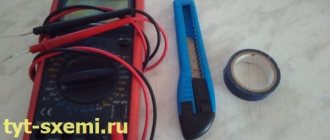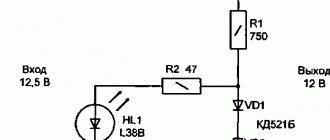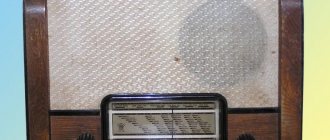The lighting for the aquarium is not made for beauty, as you might think at first glance. Many fish, like people, need more daylight. Thus, fish from tropical countries are accustomed to long sunny days throughout the year. We will tell you how to make an LED aquarium lamp with your own hands.
What difficulties may arise
A favorable climate for fish and plants at home is created in two ways: by heating inside the aquarium and by installing special lamps. With the first one, everything is quite simple, but with the calculation of the required lighting and installation of the lamp, especially if it is a homemade option, difficulties arise. The conditions for keeping fish and plants in an aquarium depend on their species and the size of the aquarium.
The second difficulty is proper installation and connection. For a person who would like to make the life of pet fish more comfortable, but does not have much experience working with electricity, he has to follow the instructions and try not to make mistakes. You can, of course, buy the necessary spotlight, or even order specialists to come to your home, but this is not cheap; for a large aquarium, purchase and installation can cost tens of thousands of rubles, or even more. Therefore, we recommend making a homemade lamp for the aquarium.
The third main problem is the question of which lamps to choose to continue daylight hours for pet fish. We recommend choosing LED systems.
How to organize aquarium lighting
The most suitable lighting system options are in the area of the lid and front wall. In natural conditions, the only source of light for the inhabitants of reservoirs is the sun, which, as is known, provides overhead lighting.
Therefore, the most natural living conditions for aquarium animals and plants are provided by a lighting system located in the area of the cover glass and in the upper part of the façade glass.
But already at a depth of more than 10 cm from the surface of the water, the light is significantly scattered (which is affected by the lid of the aquarium, the thickness of the water), so reflectors are often used to increase efficiency. With their help, the lamp can also illuminate the walls. Popular solutions based on the use of LEDs include the following designs:
- tape lighting;
- use of spot LEDs and installation of a full lighting system.
In the first case, you will only need the tape itself; its quantity should be calculated based on the dimensions of the aquarium. To connect, you will need a 12 V power supply. To make the structure safe, you will need a sealant. Double-sided tape is used to attach the LED strip.
Placing the diode strip in a container
The second option is more difficult to install; more materials are used for its implementation: spot LEDs, the number of which is determined by the volume of the aquarium; plastic gutter (will serve as a housing); power supply 12 V; wires, connector sockets for installing LEDs; Coolers can be useful if necessary.
Work in stages
First, a simpler solution will be considered - with tape. In this case, installation can be performed even by a person without experience. You need to cut the LED strip to the required length. Often lighting is done around the entire perimeter of the lid.
The first step is to connect the wires of the power supply and tape. Then the cut of the plastic strip and the area where the wires connect are filled with sealant to secure the structure. By the way, today you can purchase a waterproof version of the tape (IP68), which will allow installation in water. The last stage of work is the installation of the resulting structure. This can be done using double-sided tape or silicone sealant.
The second option involves the use of spot LEDs. If you install them in a plastic gutter, you can get a full-fledged lamp. To work, you will need one or two pieces of plastic gutter, in the base of which you need to drill a series of holes. Their number must correspond to the number of LEDs. Connector sockets are used for fastening.
The finished lamp must be connected to a 12 V power supply. Moreover, it is advisable to choose a parallel option for connecting LEDs, which will allow the design to function even if one of the LED elements fails.
The lamp is installed above the cover. LEDs are characterized by a small heat release during operation, but you can still play it safe and install the finished structure on the strips. If the aquarium is quite large, then several coolers will allow you to avoid heating the lighting cover from a large number of working LEDs.
DIY instructions
First of all, you should think about how the aquarium lamp will be located:
- Installation of the lamp in the aquarium lid.
- Pendant lamp without cover.
- Lighting that surrounds the aquarium along the bottom (if directly in the water, then you need to choose an LED strip with protection class IP68, it is used to illuminate pools and fountains; but this is generally overkill).
- The most popular option is a lamp inside the lid. Watch the video below to see how you can make an aquarium lid yourself.
Interesting video on the topic:
Illumination calculation
Now let's move on to calculating the required light specifically in your aquarium.
In addition to illumination, measured in lux, there is also a parameter of luminous flux in relation to area, it is measured in lumens (lm). 1 lux = 1 lm/m2.
First, we calculate the area of the bottom; to do this, we multiply the length by the width in meters. Then we multiply this number by the number of lux you fixed from the previous chapter. As a result, you will find out the luminous flux.
Where E is the illumination in lux, S is the area of the bottom of the aquarium, F is the luminous flux in lumens.
We select the number of luminous flux from the point where you have already fixed it in advance (see the previous chapter)
The lamp shines at different points of the aquarium with different strengths, and there may be losses. In order not to get confused in complex calculations, you can simply make reflectors for the aquarium with your own hands or buy a ready-made one. It diffuses light evenly throughout the aquarium.
We recommend watching a video on the topic:
LED power calculation
Many hams take old parts and reuse them. The same with LEDs - they are soldered out of broken equipment and used for the same illumination of the aquarium. But the easiest way is to immediately buy LED strips if this is your first time doing this.
LED strips are much more convenient for installation: the LEDs are in one line, high-quality strips have fairly reliable soldering, are compact, and distribute light evenly.
The number of lumens in one watt of LED power varies from 80 to 150. The total power of all LEDs in the strip is indicated in the documentation or on the strip itself. Knowing the power of LEDs or LED strip, it is easy to calculate how long we need the strip or the total power of individual LEDs.
Now you can prepare the material and begin assembly and installation. There are many options for LED aquarium lights on the Internet. Searching on the Internet is not difficult. The main thing is to follow the basic rules when assembling.
Why are LEDs better than halogen, fluorescent and incandescent lamps?
Before the advent of new generation lamps, lighting was done on:
- Fluorescent lamps;
- halogen lamps;
- incandescent lamps.
Now everything has shifted towards lighting the aquarium with LED lamps, why is that? Incandescent and halogen lamps emit a lot of heat, which causes additional heating of the water, sometimes excessively, which requires heat removal. Heat was removed using forced air cooling, i.e. cooler (fan). This caused additional noise and costs.
Lighting an aquarium with LED strip produces less heat and produces more light. This is especially true for plants that require strong lighting: from 6,000 to 10,000 or more Lux of illumination. An incandescent lamp produces from 9 to 20 Lumens for every Watt of its power.
Let's compare classic and LED aquarium lighting, using the simplest calculations of power and illumination as an example.
Comparison of lamp types
1 Lux = 1 Lumen/m2. That is, to provide a classically shaped aquarium (depth less than its length) with a minimum illumination of 6000 Lux, you need about 400 W of incandescent lamp light. When its efficiency is less than 10%, it turns out to be a rather powerful heater, not a lamp.
Halogen lamps have a higher luminous flux, fluorescent lamps have an even higher luminous flux, and the heating of water from them is less. But the latter contain mercury vapor, which, if the lamp is damaged, can bury all living creatures in the water.
However, LED aquarium lighting, as of the day this article was written (end of 2021), is the most effective. LEDs provide 80-140 lm for every W of their power, which is 5-10 times more efficient than competitors.
Lighting is more important for flora. LED lamps in the aquarium will provide the necessary illumination for plants and save money. Think for yourself how much it will cost to operate an incandescent lamp with a total power of 0.5 kW, which operates for 5-12 hours a day. Even the use of automation will not allow you to achieve significant savings. Light from LEDs consumes from 50 to 150 watts, depending on the size of the aquarium.
LED lighting in an aquarium can be used both as decorative lighting and as functional lighting. Spotlights and ribbons can be placed in the lower layers of water, both for illumination and to provide light to plants located at the bottom of the container.
Correct connection of homemade lighting
When working on a lamp, do not forget a few simple rules:
- Diodes are connected differently than other lamps - it is important to maintain the polarity, otherwise they will not light.
- An LED strip or chain of LEDs must be connected strictly through a power supply (driver); it cannot be connected directly to the network.
- We recommend not to forget about the reflector. Without it, plants and fish on the sides of the main direction of radiation will wither and die, but with a reflector, the entire aquarium will receive the same amount of light.
- Do not skimp on components, especially when it comes to the electrical part. Chinese LEDs do not work well, they quickly fail and often do not produce the characteristics stated on the packaging. It is better to purchase more expensive analogues from large manufacturers. The same applies to other components.
- For a full day of light, fish and plants need from 8 to 12 hours.
AQUAkmv
Post Views: 12,197
This light does not pretend to be super correct or to replace expensive branded lamps. Everything that is written below is my IMHO, I do not force anyone to do the same.
To build our light we will use Chinese LEDs, for example Chanzon. We will use ready-made drivers for PT4115. Power supply for 24V and a power of at least 120 W (5A).
CALCULATION OF THE LAMP
Let’s decide on the required lighting intensity: – 20..30 Lm/liter is enough for the normal growth of Vallisneria, Anubias, Echinodorus and other undemanding plants. – 40 Lm/liter most demanding plants grow well (Cuba spreads along the bottom, Blixa, Ludwigia brevipes, Didiplis, Eusteralis stellata, Limnophila aromatica grow well). – 60 Lm/liter the above plants intensively gain red color (with a sufficient level of microelements). – >60Lm/liter – for growing dense mats of lileopsis, parvula in deep aquariums – in this case, the daylight hours should be divided into several phases, in which the lamp operates at 100% for a couple of hours and at reduced power the rest of the time.
I take the example of a 100-200l aquarium . We count the number of LEDs by channel:
| Quantity | Name | Color | Wave | Power | Current | LM |
| 6pcs | Royal Blue | Royal blue | 440nm | 3W | 400-500mA | 50-60lm 300 |
| 12pcs | Deep Red | Dark red | 660nm | 3W | 400-500mA | 80-90 lm 960 |
| 6pcs | Amber | Amber | 600nm | 3W | 400-500mA | 80-90 lm 480 |
| 18 pcs | White | White | 6000-6500K | 3W | 600-700mA | 260-280lm 4680 |
| 6pcs | Cool White | Cold white | 10000-15000K | 3W | 600-700mA | 260-280lm 1560 |
TOTAL: 7980lm, 48pcs of LEDs
Total we get ~7980lm, Chinese... Accordingly, we take somewhere 6000-6500lm pure at 100% power for a 100-200l aquarium will be quite enough. Red/blue ratio = 3:1, according to all the rules. Well, for a tasty treat, all channels are dimmable!
Purchase of components
| 1. LED Chanzon Royal Blue 3W, 6pcs | Ali link: Buy |
| 2. LED Chanzon Deep Red 3W , 12pcs | Ali link: Buy |
| 3. LED Chanzon Amber 3W , 6pcs | Ali link: Buy |
| 4. LED Chanzon White 3W , 18pcs | Ali link: Buy |
| 5. LED Chanzon Cool White 3W , 6pcs | Ali link: Buy |
| 6. Adhesive for LEDs, 5 pieces | Ali link: Buy |
| 7. Stars for LEDs, 48pcs | Ali link: Buy |
| 8. Power supply 24v 5A, 1 piece | Ali link: Buy |
| 9. 16-channel 12-bit PWM PCA9685, 1 piece | Ali link: Buy |
| 10. Driver PT4115 700ma, 8pcs | Ali link: Buy |
| 11. Resistors 0.2 Ohm, 4 pcs | Ali link: Buy |
| 12. Connectors from the lamp to the drivers | Ali link: Buy |
For installation you will need wires, connectors, breadboards for assembling drivers, and soldering supplies:
| 1. Excellent installation wire | Ali link: Buy |
| 3. Good solder | Ali link: Buy |
| 4. Development boards | Ali link: Buy |
| 5. No-clean flux RMA 223 | Ali link: Buy |
| 7. Soldering iron with temperature control | Ali link: Buy |
Connection diagram
We connect everything according to the diagram, first mount the LEDs on the stars and then on the radiator with glue. We arrange it on the radiator as conveniently as possible, but so that there is no color music, we try to distribute the color along the entire length of the radiator.
Driver setup
According to our scheme, we will need two driver options - 500 mA and 700 mA. The ones that are sold are generally always set to 700mA. In order to make such a driver 500mA, it will be necessary to replace the resistors that set the current. The current on our PT4115 is set according to the plate:
| I mA | R oM |
| 350 | 0,28 |
| 500 | 0,2 |
| 700 | 0,14 |
| 100 | 0,1 |
Resistance calculation for PT4115
From the factory, the driver is configured for a current of 700 mA and therefore three parallel-connected resistors with nominal values of 0.5 Ohm, 0.4 Ohm, 0.4 Ohm are installed between the VIN and CSN pins, which are according to the formula:
we are given 0.14 Ohm, which corresponds to 700 mA. The easiest modification option is to buy 0.2 Ohm SMD resistors (from the link above in the spare parts table), unsolder all three that are on the board and instead of any of them solder your own 0.2 Ohm resistor. For example like this:
There is only one question left - the radiator. We need one that can dissipate 120-150W of heat without fans and distribute all 48 LEDs on itself. Personally, I prefer the TPK-011 radiator from Techno-Logic
You choose any one that suits the characteristics.
What kind of light do aquarium plants need?
A few words about emission and absorption spectra. Plants are interested in the visible part of the light spectrum. To capture light, plants use chlorophyll, which absorbs light from the blue and red parts of the spectrum.
Green plants absorb visible light predominantly in the blue and red parts of the spectrum
Plants reflect green light, which is why we see them green. So the white light visible to our eyes contains all the parts of the spectrum that plants need (blue and red) and even more (the green part of the spectrum not used by plants). Therefore, any white light source will be suitable for lighting a standard aquarium. You just need to correctly calculate how much light is needed in your case.
Choosing LED lamps for your aquarium wisely
The selection of light bulbs for an aquarium should be based on two key parameters. The first is the intensity of the light flux. The second is color temperature
When choosing a lamp, pay attention to the lumen/W indicator. The higher it is, the greater the energy efficiency, that is, the efficiency of the light source
Also pay attention to the pulsation coefficient of the light flux - let it be less than 5%, ideally 1%. Higher values of this indicator will lead to increased eye fatigue, and why do you need an aquarium that negatively affects your health.
Each aquarium light has a different color temperature range. In an aquarium it should not be less than 5500 K. The ideal solution is if the color temperature is 6000–8000 K.
If an ice light source with a value of less than 4000K or lower is selected, the light will be excessively yellow. Conversely, a value of more than 6000K indicates a predominance of blue color. The most favorable color palette for an aquarium is warm white, cool white or daylight.
The quality level of the light source is no less important. You should not buy overly cheap lamps. They have an increased glow intensity only during the first time of use. After a certain period of time, the process of degradation of the light source can be observed, which negatively affects the inhabitants of the flora and fauna of an artificial home pond. The choice of lamp shade is an individual decision of the tank owner.











